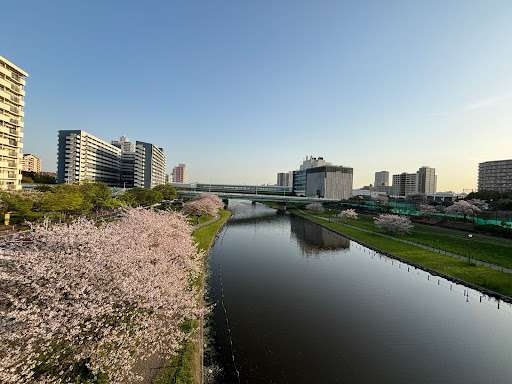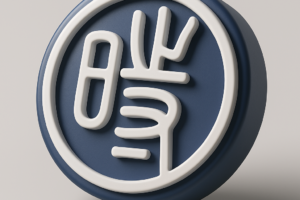
Ojima is a neighborhood in Koto-ku, Tokyo’s central-eastern area. Visitors come for the scenic riverways and bustling shotengai (traditional shopping streets), while residents stay for the down-to-earth, family-oriented atmosphere.
Ojima got its name, meaning “big island,” from its origins as a coastal marshland island. Today, it is something of a quasi-island, bordered neatly on all sides by intersecting rivers.
Also check out our article all about the Enoshima island life.
Rivers and Roads
The Tatekawa River—the northern border of Ojima—runs below the Shuto Expressway overpass. The sounds of the rushing cars and water blend, creating a distinct ambiance for Tatekawa Kasenjiki Park, which runs alongside the river.
Golfing greens, jungle gyms, tennis courts and outdoor workout equipment pepper the open space. Elderly women gather in small circles to play traditional instruments while their husbands stretch and use the workout equipment nearby. A little farther down the path, friends and couples practice their golf swings at the park’s driving nets.
A walking path follows the length of the park, filled with people out for a stroll, a jog, or a bike ride. The river, the greenery and the path run side by side until they reach the neighborhood’s eastern edge at the Kyu-Nakagawa River.
Kyu-Nakagawa River
The Kyu-Nakagawa River is famous for its cherry blossoms in spring. In the warmer months, dragon boats crisscross beneath its bridges, and people can often be seen fishing from the riverbank.
Ojima Komatsugawa Park spreads out beyond the river, and on weekends it becomes a lively gathering place. Children fly kites and play soccer on the open fields, adults join group yoga sessions, and elderly couples stroll through the manicured garden. Nearby, high school students lean their bikes together and relax under the shade of trees, talking and laughing as the afternoon drifts by.
If you turn and continue your stroll along the riverbank, you can visit the Nakagawa Funabansho Museum, a reconstruction of the area’s historical waterway checkpoint. Afterwards, sip on a Lingonberry latte on the patio of the nearby Swedish-owned and operated ATER Tokyo cafe.
As you watch the rhythm of people coming and going, Ojima’s international side becomes easy to spot. It is home to one of Tokyo’s largest Indian communities—second only to Nishi-Kasai—and the neighborhood’s history of immigration traces a similar path.
Read our full neighborhood guide to Nishi-Kasai
The local South Indian restaurant and shop, Maharani, is a warm, cozy spot to stop in for lunch. Their dosa—a large roll of crispy flatbread served with chutney and sambar—is quite popular. In the adjoining shop, you can purchase Indian snacks that are usually hard to find in Tokyo, like crunchy aloo bhujia and the sweet treat rasgulla.
The India International School in Japan is also located nearby in Sengoku. In the late afternoon, the streets take on a joyful energy as its students walk home alongside those from the neighboring Japanese schools. The result is a calm, family-oriented neighborhood with a quietly diverse everyday rhythm.
Shopping in the Traditional Style
Quiet rivers aren’t Ojima’s only charm. It’s two traditional shopping streets, both popular enough to have been featured on television, that buzz with life on weekends as residents and visitors pack the streets.
The Nakanohashi “Sun Road” shopping street becomes a pedestrian zone from 3pm – 8pm. Shopkeepers preside over their fruits, vegetables and fresh fish, calling out cheerfully to passers-by. Locals stroll and cycle through the lane, stopping at food stalls for snacks along the way.
Vegetables along Nakanohashi “Sun Road” Shopping Street
One of the Sun Road shopping street’s highlights is Meika Seven, a longtime neighborhood bakery known for its thin-crust, red-bean buns, which often draw long lines in the morning.
The other main arcade is the Ginza Chuo shopping street, which runs through the center of the neighborhood. Here, small produce stalls nod to Ojima’s early days as a farming settlement beside the Onagi River, now the area’s southern boundary.
Accessing Ojima is easy—it takes just 25 minutes from Shinjuku Station on the Toei Shinjuku Line. The area has three stations, one of which—Higashi-Ojima—is built over the Kyu-Nakagawa River.
Ojima has the perfect balance of calming river walkways and energetic shopping arcades, tempting even the most seasoned Tokyo explorers to take the train over and try it for themselves.
If you’re all about finding the perfect balance between calm and fun, you might be interested in our travel guide to Onomichi.





